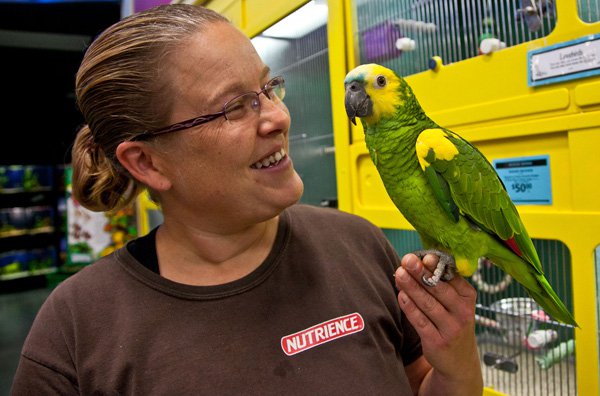
Finding an interesting angle to topics such as mustard, ketchup, hair dye, and the difference between panicking and choking is not an easy task. Yet Malcolm Gladwell has written in-depth about all of those topics and many more in his regular The New Yorker magazine column.
Gladwell's latest book, What the Dog Saw and Other Adventures (Little, Brown and Company, 2009) is a collection of his favorite columns covering a variety of topics from the past thirteen years.
The topics for all of his books along with his columns are not based on normal, everyday topics that most columnists find a story behind. Gladwell explains how his approach is a little different. He wrote that he is, "more interested in describing what people who think about homelessness or ketchup or financial scandals think about homelessness or ketchup or financial scandals."
What the Dog Saw Book Title
This book is named after a column titled 'What the Dog Say' he wrote about Cesar Millan, the Dog Whisperer.
He wrote about the two questions he asked himself during an interview with Millan, "What goes on inside Millan's head as he does that? That was what inspired me to write the piece. But after I got halfway through my reporting, I realized there was an even better question: When Millan performs his magic, what goes on inside the dog's head?".
The Story of Mustard and Ketchup
Ever wonder why there are so many varieties of mustard on the grocery store shelf but only one variety of ketchup?
There is a highly interesting story behind the reasons for why consumers can get different types of gourmet mustard and why in the end of much consumer research, ketchup turned out to be just ketchup.
This is a great story about marketing and consumer behavior and Gladwell relates the story perfectly.
Research on Dog Bites
Another prime example of how Gladwell finds the story and then substantiates it with in-depth and relevant research is the column on what pit bulls can teach us about crime.
He starts out by looking at the breeds that are perceived as violent and then builds a case based on relevant research for how and why dogs actually bite.
He details research showing the breeds of dogs that bite most often, the genders of the biters, the percentage of the biters were who hungry and had a history of being chained, and how many were neutered.
The Art of Failure
With the column titled, 'The Art of Failure', Gladwell explores implicit and explicit learning and the difference between what happens when a person panics and when they choke. The column is really about what happened to John F. Kennedy, Jr. and his failure to control his plane in his 1999 fatal crash.
Gladwell went so far in his research to hire a pilot to take him through a spiral dive in efforts to simulate what happened to Kennedy when he went into the fatal spiral spin that took his life and two others.
The writing is so detailed that the reader can almost feel the panic that Kennedy must of felt while struggling to find his way in the dark.
Other Books by Malcolm Gladwell
This is his fourth book. Gladwell's previous bestsellers include The Tipping Point (Time Warner Book Group, 2000,2002), on how ideas, trends or social activities hit a tipping point and become phenomena's. Blink (Time Warner Book Group, 2005) examines how and why decisions are made in the blink of an eye.
In Outliers The Story of Success (Little Brown and Company, 2008), the readers learn Gladwell's theory for why some people are more successful than others.
Gladwell Shares His Personal Life
All of the columns included in this book are exceptionally written. One of the best sections is in the introduction where Gladwell shares a bit of his professional and personal lives.
While Gladwell may wonder what the dog saw when writing about the Dog Whisperer, his readers can easily be wondering what Gladwell saw when writing about ketchup or hair dye or whatever topic he decides to write about.
Gladwell's writing style certainly helps the story but it is his unusually in-depth research that makes the story worth reading.
 How Do Pets Deal With The Loss Of A Limb?
How Do Pets Deal
How Do Pets Deal With The Loss Of A Limb?
How Do Pets Deal
 Find the Best Ulcer Treatments For Horses
Find the Best Ulcer Treatments For Horses
Equi
Find the Best Ulcer Treatments For Horses
Find the Best Ulcer Treatments For Horses
Equi
 Red-crowned Amazon Parrot
Red-crowned Amazo
Red-crowned Amazon Parrot
Red-crowned Amazo
 Maine Coon Kittens
Maine Coon Kittens
General depiction
The Maine
Maine Coon Kittens
Maine Coon Kittens
General depiction
The Maine
 Dog Scratching - Why Your Dog Might Be Itching Himself To Distraction
Dog Scratching -
Dog Scratching - Why Your Dog Might Be Itching Himself To Distraction
Dog Scratching -
Copyright © 2005-2016 Pet Information All Rights Reserved
Contact us: www162date@outlook.com